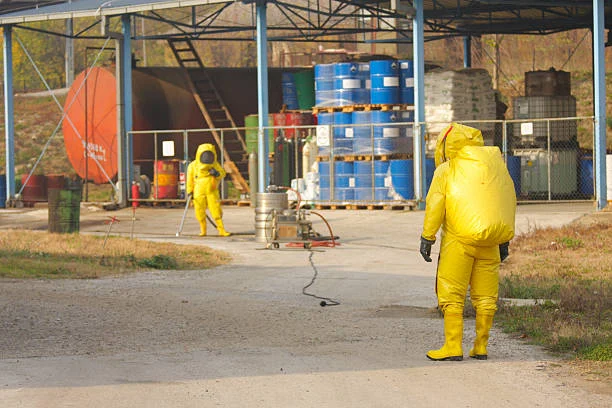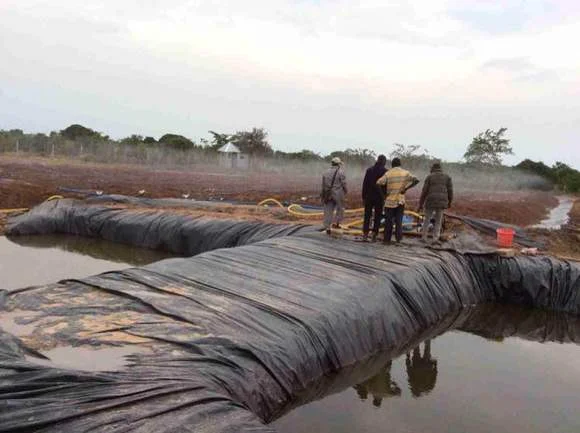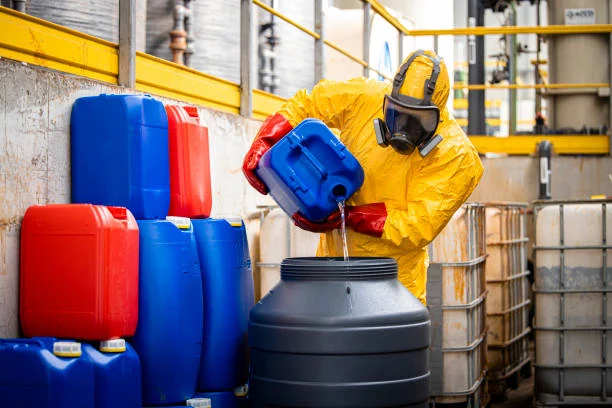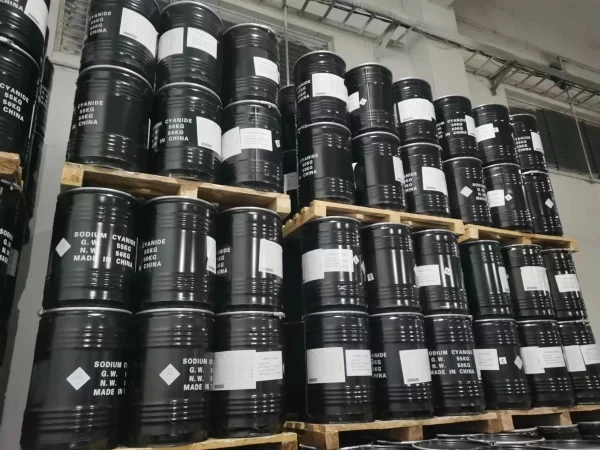Sodium cyanide, a highly toxic compound with the chemical formula NaCN, is a derivative of Hydrocyanic Acid. This colorless crystalline powder is known for its solubility in water and its characteristic bitter almond smell, although it is important to note that not everyone can detect this odor—approximately 50% of the population lacks the genetic ability to smell it. This compound is not particularly stable; the cyano group can be easily displaced by stronger acids, leading to a loss of toxicity. Additionally, Sodium Cyanide can oxidize when exposed to moist air or Glucose solutions, which is why glucose is sometimes used as an Antidote for cyanide poisoning.
Industrial Applications of Sodium Cyanide
Sodium cyanide is primarily utilized in the mining and processing industries, particularly in the extraction of precious metals such as gold and silver. In these processes, sodium cyanide solutions act as catalysts, facilitating the oxidation of these metals, which cannot be directly oxidized by oxygen. This method, known as cyanidation, has been a cornerstone of gold mining for over a century, allowing for the efficient recovery of precious metals from ore.
Beyond mining, Sodium cyanide is also employed in Electroplating, where it is used to deposit a layer of metal onto a surface. Its effectiveness in these industrial applications has made it a valuable chemical, but its toxicity raises significant safety and environmental concerns.
Health Risks Associated with Sodium Cyanide
The dangers of sodium cyanide cannot be overstated. Exposure to this compound can lead to severe health effects, as it is a potent inhibitor of cellular respiration. When ingested, inhaled, or absorbed through the skin, sodium cyanide can interfere with the body's ability to utilize oxygen, leading to symptoms such as headache, dizziness, confusion, and in severe cases, loss of consciousness or death.
The mechanism of toxicity involves the binding of cyanide ions to cytochrome c oxidase, an essential enzyme in the mitochondrial electron transport chain. This binding prevents cells from using oxygen, effectively suffocating them at the cellular level. The rapid onset of symptoms means that immediate medical attention is crucial in cases of suspected cyanide poisoning.
Sources of Exposure
While sodium cyanide is primarily associated with industrial use, it can also be found in various consumer products. For instance, certain jewelry cleaning agents and polishes may contain cyanide compounds, posing a risk to users if not handled properly. Additionally, some artistic materials, such as specific types of gouache and watercolor paints, may also contain cyanide, highlighting the need for caution among artists and hobbyists.
Safety Measures and Antidotes
Given the high toxicity of sodium cyanide, strict safety measures are essential in environments where it is used. This includes proper training for workers, the use of personal protective equipment (PPE), and the implementation of emergency response protocols. In the event of exposure, immediate decontamination and medical intervention are critical.
As mentioned earlier, glucose can serve as an antidote for cyanide poisoning, as it helps to restore cellular respiration. Other antidotes include hydroxocobalamin, which binds to cyanide ions to form a non-toxic complex that can be excreted by the body, and sodium thiosulfate, which facilitates the conversion of cyanide to thiocyanate, a less toxic compound.
Environmental Concerns
The use of sodium cyanide in mining and other industries has raised significant environmental concerns. Accidental releases of cyanide into the environment can have devastating effects on local ecosystems, particularly aquatic life. The infamous 2000 Baia Mare cyanide spill in Romania, which resulted in the contamination of rivers and the death of thousands of fish, serves as a stark reminder of the potential hazards associated with this chemical.
To mitigate these risks, many countries have implemented strict regulations governing the use and disposal of sodium cyanide. Companies are required to have comprehensive risk management plans in place, and advancements in technology are being explored to develop safer alternatives for gold extraction and other applications.
Conclusion
Sodium cyanide is a powerful and versatile chemical with significant industrial applications, particularly in the mining sector. However, its high toxicity poses serious health risks to humans and the environment. Understanding the properties, uses, and dangers of sodium cyanide is crucial for ensuring safety in its handling and application. As industries continue to seek efficient methods for metal extraction and processing, the challenge remains to balance these needs with the imperative to protect human health and the environment. Ongoing research and regulatory efforts will be essential in addressing these challenges and promoting safer practices in the use of sodium cyanide.
- Random Content
- Hot content
- Hot review content
- Sodium bisulfite 99% High Quality Factory Supply
- Digital Electronic Detonator(Delay time 0~ 16000ms)
- Potassium Permanganate – Industrial Grade
- Industrial Acetic Acid 99.5% Colorless Liquid Glacial acetic acid
- Anhydrous Ammonia 99% Liquid
- Cyanoacetic acid 99% Powder
- Food Grade Heavy Light Precipitated Calcium Carbonate Powder Granular 99%
- 1Discounted Sodium Cyanide (CAS: 143-33-9) for Mining - High Quality & Competitive Pricing
- 2China's New Regulations on Sodium Cyanide Exports and Guidance for International Buyers
- 3Sodium Cyanide 98% CAS 143-33-9 gold dressing agent Essential for Mining and Chemical Industries
- 4International Cyanide(Sodium cyanide) Management Code - Gold Mine Acceptance Standards
- 5China factory Sulfuric Acid 98%
- 6Anhydrous Oxalic acid 99.6% Industrial Grade
- 7Oxalic acid for mining 99.6%
- 1Sodium Cyanide 98% CAS 143-33-9 gold dressing agent Essential for Mining and Chemical Industries
- 2High Quality 99% Purity of Cyanuric chloride ISO 9001:2005 REACH Verified Producer
- 3Zinc chloride ZnCl2 for High Molecular Weight Polymers Initiator
- 4High Purity · Stable Performance · Higher Recovery — sodium cyanide for modern gold leaching
- 5High Quality Sodium Ferrocyanide / Sodium Hexacyanoferr
- 6Gold Ore Dressing Agent Safe Gold Extracting Agent Replace Sodium Cyanide
- 7Sodium Cyanide 98%+ CAS 143-33-9











Online message consultation
Add comment: